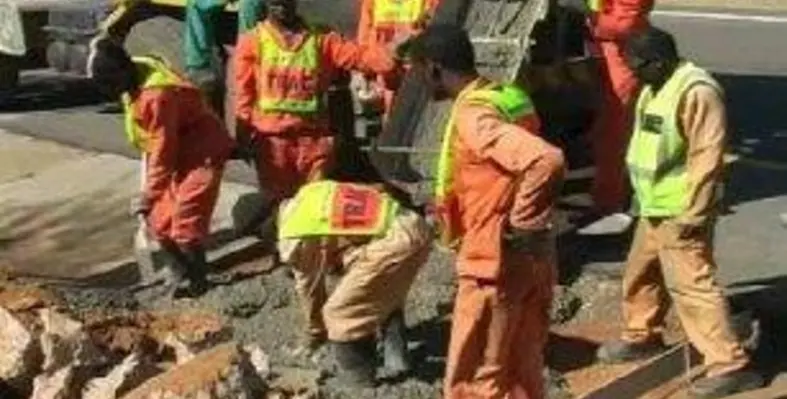Large construction projects are alive and well in Africa, and several landmark completions are expected next year
The frenzy of activity ahead of the soccer World Cup was the major construction story in Africa last year, with the commissioning of SA's splendid Gautrain airport link being the most prominent 'legacy' feature.
With the Bombela consortium in charge Pretoria should be reached by the end of this year, and by the end of 2012 another completely unrelated rail line could be the main talking point in sub-Saharan Africa. The rehabilitated CFB line which will provide a Cape-gauge link right across Angola again is due to be finished within that year – see box below.
Apart from major commodities-related projects, covered elsewhere in this extended feature, sub-Saharan Africa is the scene of some of the most exciting infrastructure schemes anywhere outside China and the Gulf.
Gateway contender
Moving west to east, first comes the brand-new international airport being completed by Saudi Binladin on the (far) outskirts of Dakar at an estimated cost not far short of US$1bn. This is all part of Senegal's ambitious plans to develop itself as a serious 'gateway contender' for pre-eminent Lagos, serving not just the CFA zone but also the entire West African region.
Within Nigeria itself there's a whole host of projects coming along, including the long awaited and China-implemented refinery schemes (separate feature), a $100mn shopping mall in industrial/residential Ikeja, as well of course as the ongoing electrification programme nationwide and the long-running attempts to rehabilitate the entire rail system (running well behind Angola's single-line system because of funding, we understand).
In next door Chad a big chunk of the rural power supply system is being put in from new, including a conventional brand new thermal plant at Farcha. This will be oil fuelled of course, and the Chinese-built development is being partnered by a China-funded and -built refinery for SNH.
Africa's centre
Apart from a synthetic fertiliser development in Gabon not a lot is happening in Africa's centre – the Congo River still being the long-term hope of the continent's hydro planners all the way down to the South – but in Angola, funded by all those barrels of oil now being exported to China, a massive programme of large-scale urbanisations is slowly taking place, concentrated in booming but high-cost Luanda in particular. Power, water and low-rise housing projects are the main features of this, with South African materials suppliers and designers being especially well placed to pick up lucrative development contracts.
In the east Kenya seems to be booming right now, despite the continuing general failure to locate oil and gas to pay for it all, certainly on the scale of neighbouring South Sudan and Uganda. The contrasting chaos in Somalia accounts for some of this, with Nairobi's multiple and realistic attempts to compensate – and provide a home for NGOs - impressing the international funding community enormously.
There the big construction talking point right now is the $4bn-plus greenfield Tatu City scheme which is eventually planned to house 60,000 or more. This is not a completely new idea of course but the recruitment of Russian financiers has been a big help; they are not going to run out of funds soon. Water supplies will be a problem and many utility and low-cost housing contracts remain to be placed so we expect to hear lots more from outside Nairobi within 2012. And from the Geothermal Development Co with its operations further north too.
Ethiopia and SA
In Ethiopia the big news as usual is about power supply, specifically progress on the massive 1.9GW Gilgel Gibe dam/generating complex located on the reliable Blue Nile river. This will not be starting to pay for itself until the end of 2014 we understand, but in the long term it represents real hope for a star-performing (and therefore supported) country in probably Africa's most troubled region.
Finally in South Africa, still the continent's economic powerhouse despite its acute shortage of most energy resources other than out-of-fashion coal, the big construction news is about housing and generating capacity. The first of Medupi's 800MW generators is expected to be feeding into the severely stretched grid by the end of next year, with five more to follow within three or four years. Meanwhile the search for hydrocarbon resources to feed the rainbow nation's ambitious gas-to-liquids petrochemical industry - a world leader in technology – continues.
Housing schemes including BEE ones continue to progress right across the nation. Competition from the Chinese is fierce, including over finance, but national old favourite Old Mutual is confident that its Housing Impact Fund is well placed to see the construction of 100,000 individual units or more being completed. There's a huge local materials and skills supply industry on tap to support this nationwide.






